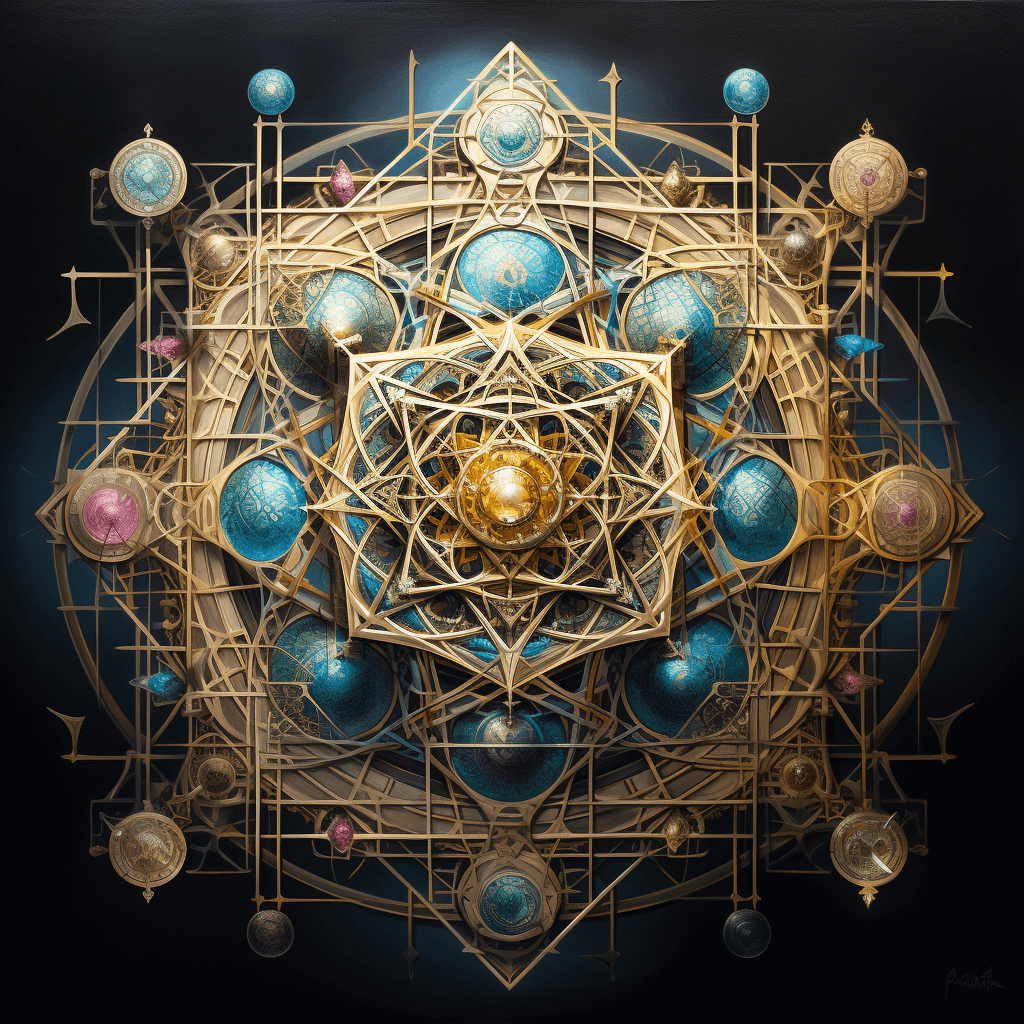Sacred Geometry: The Universal Language of Patterns and Proportions
Sacred geometry is the ancient practice of recognizing and understanding the patterns, shapes, and mathematical principles that form the foundation of the universe. These patterns are not only seen in artistic representations but also manifest in natural formations, architectural designs, and various spiritual symbols across cultures. At its core, sacred geometry is a testament to the idea that there’s a hidden order in the universe that connects the spiritual and the physical.
Origins of Sacred Geometry
The concept of sacred geometry has its roots in the study and observance of the natural world. Ancient civilizations, from the Egyptians and Greeks to the Mayans and Hindus, have used these geometric patterns in the design of their temples, art, and rituals.
For instance, the Egyptians believed that the basic patterns of existence are geometric shapes like the sphere, cube, and tetrahedron. The ancient Greeks marveled at the perfection of the “Golden Ratio” (Phi, or 1.61803398875…), which they saw reflected in art, architecture, and even in nature.

Key Concepts and Patterns
- Flower of Life: This is one of the most well-known patterns, consisting of multiple evenly-spaced, overlapping circles. The pattern is said to represent the cycle of creation, encompassing life and consciousness.
- Seed of Life: This pattern is derived from the Flower of Life. It’s made up of seven circles and represents the seven days of creation.
- Golden Ratio: Often represented by the Greek letter Phi, it’s an irrational mathematical constant that appears frequently in nature. The ratio is often seen in spirals of seashells, galaxies, and even the proportions of human faces.
- Metatron’s Cube: Derived from the Flower of Life, this complex shape contains every known Platonic solid, representing the patterns that make up our reality.

Sacred Geometry in Nature
Nature, being the most significant creator, showcases the principles of sacred geometry abundantly. From the symmetry of a snowflake to the spiral of a galaxy, these patterns are omnipresent. The way a sunflower’s seeds are arranged, or the spiraling pattern of a pinecone, demonstrates these principles. The repetitive and orderly manifestation of these patterns in nature suggests a deliberate design or a fundamental principle underlying our reality.
Application in Architecture and Art
Many architectural wonders of the world, like the Pyramids of Giza or the Parthenon in Greece, incorporate principles of sacred geometry. The architects of these structures believed that using these patterns would attract positive energies and resonate with the universal order.
In art, artists like Leonardo da Vinci used the Golden Ratio to define the proportions in his works. This application of sacred geometry not only brought aesthetic appeal but also connected the artworks to a deeper spiritual significance.
Modern Relevance
Today, the principles of sacred geometry resonate not only with artists, architects, and spiritual seekers but also with scientists and researchers. It has found its place in quantum physics, the study of DNA structures, and even in the design of technology products. The patterns of sacred geometry remind us of the interconnectedness of all things and the underlying order in apparent chaos.
Conclusion
Sacred geometry is a bridge between the tangible and intangible, between science and spirituality. It reminds us that there’s an inherent beauty and order in the universe, waiting to be recognized and appreciated. Whether one approaches it with spiritual reverence or intellectual curiosity, the patterns and principles of sacred geometry offer a profound insight into the fabric of reality.



